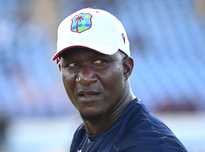To our surprise, nails can reveal a lot about our overall health. They might be a silent indicator at first, but they message us about numerous serious conditions. One such condition is known as Terry nails, which might seem like a simple change, but it could be a warning sign of liver cirrhosis. Understanding this connection can help us detect liver problems early and potentially save lives.
What are Terry's nails

Credit: indianjnephrol.org
Terry’s nails are a distinct nail abnormality characterised by a white, “frosted” appearance that covers most of the nail bed, leaving only a narrow pink or brown band at the tip. This condition was first discovered by Dr. Richard Terry in 1954. This condition is not just a cosmetic concern; it is associated with serious underlying health issues. Most notably, liver cirrhosis, but they may also appear in individuals with heart failure, diabetes, or kidney disease. Recognising this subtle change in nail appearance could offer important clues about a person’s internal health.
Who was Dr. Richard Terry
Born on October 19, 1914, Dr. Richard Terry was a distinguished British physician whose career left a lasting legacy and impact in the field of internal medicine. During World War II, Dr. Terry served as a regimental and field ambulance medical officer in the Royal Army Medical Corps (Territorial Army).
He achieved a lot during his long life, but when life finally decided to congratulate him on making such inventions in medical science, he passed away on his 46th birthday. Despite his early death, his contributions endure, particularly his identification of the nail condition, called Terry’s nails.
In the words of Dr. Richard Terry, ‘fully developed white nails exhibit a ground-glass-like opacity of almost the entire nail bed’ are called Terry’s nails. It extends from the base of the nail, where the lunula is indistinguishable, to within one or two millimetres of the distal border of the nail bed, leaving a distal zone of normal pink. The condition is bilaterally symmetrical, with a tendency to be more marked in the thumb and forefinger.
Dr. Terry’s findings
Dr. Richard Terry investigated this nail-bed abnormality in 82 of 100 consecutive patients with hepatic cirrhosis. In more than 90% of those patients, the cirrhosis was due to alcohol abuse. Six months later, Terry observed such red half-moons also in patients with congestive heart failure.
What does research say
A research titled “Association of Terry’s nails with Liver Cirrhosis” evaluated 1,000 consecutive patients from hepatology and gastroenterology clinics across two institutions, assessed between May 2016 and February 2020, among these 117 patients had Terry’s nails.
Key findings
Among patients diagnosed with Liver cirrhosis, 25.6% had Terry’s nails. After other factors such as age, heart failure, type 2 diabetes, and chronic liver disease, such as cirrhosis, remained the only significant correlate with an odds ratio of 5.7 (almost 95%).
In clinical implications, Terry’s nails can serve as a supportive, not definitive, clinical condition of cirrhosis, especially in primary care.
How to know if one has Terry’s nail
- Visual features: If the nails are white and have a ground-glass appearance, it could be Terry’s nails.
- No visible nail lunula (the half-moon shape at the nail base)
- Symmetrical appearance (it usually affects fingers too, often bilaterally and not just nails)
- Narrow reddish-brown band at the tip ( a distinct coloured band that remains at the very distal end of the nails)
Check against other signs
- This is not a disease, but a sign of something more serious.
- Chronic fatigue
- Heart failure
- Diabetes
- Kidney disease
- Unexplained weight loss or weakness


 Daren Sammy Fined, Handed Demerit Point for Umpire Criticism After Test Match Comments
Daren Sammy Fined, Handed Demerit Point for Umpire Criticism After Test Match Comments
 Gavaskar Calls for Yadav's Inclusion, Questions Middle Order After India's Test Defeat
Gavaskar Calls for Yadav's Inclusion, Questions Middle Order After India's Test Defeat
 Decoding Your Health: Spotting 5 Prediabetes Warning Signs Before a Blood Test
Decoding Your Health: Spotting 5 Prediabetes Warning Signs Before a Blood Test
 X Corp. Cracks Down: Half a Million Indian Accounts Suspended for Policy Breaches
X Corp. Cracks Down: Half a Million Indian Accounts Suspended for Policy Breaches
 Headline:
Early Warning Signs: 5 Heart Attack Symptoms to Watch Out For Weeks in Advance
Headline:
Early Warning Signs: 5 Heart Attack Symptoms to Watch Out For Weeks in Advance
 Facial Icing: Benefits, Risks, and Safe Application of This Viral Beauty Trend
Facial Icing: Benefits, Risks, and Safe Application of This Viral Beauty Trend
 Chess Sensation Praggnanandhaa Joins Magnus Carlsen's Team Liquid for Esports World Cup
Chess Sensation Praggnanandhaa Joins Magnus Carlsen's Team Liquid for Esports World Cup
 Mastering JPG to PDF Conversion: A Graphic Designer's Guide to Quality and Efficiency
Mastering JPG to PDF Conversion: A Graphic Designer's Guide to Quality and Efficiency
 MI New York's Tajinder Dhillon Shines: From IPL Benchwarmer to MLC Star
MI New York's Tajinder Dhillon Shines: From IPL Benchwarmer to MLC Star
 Akmal Blasts PCB's Interim Coach Choice: Ex-Cricketer Questions Logic Behind Mahmood Appointment
Akmal Blasts PCB's Interim Coach Choice: Ex-Cricketer Questions Logic Behind Mahmood Appointment